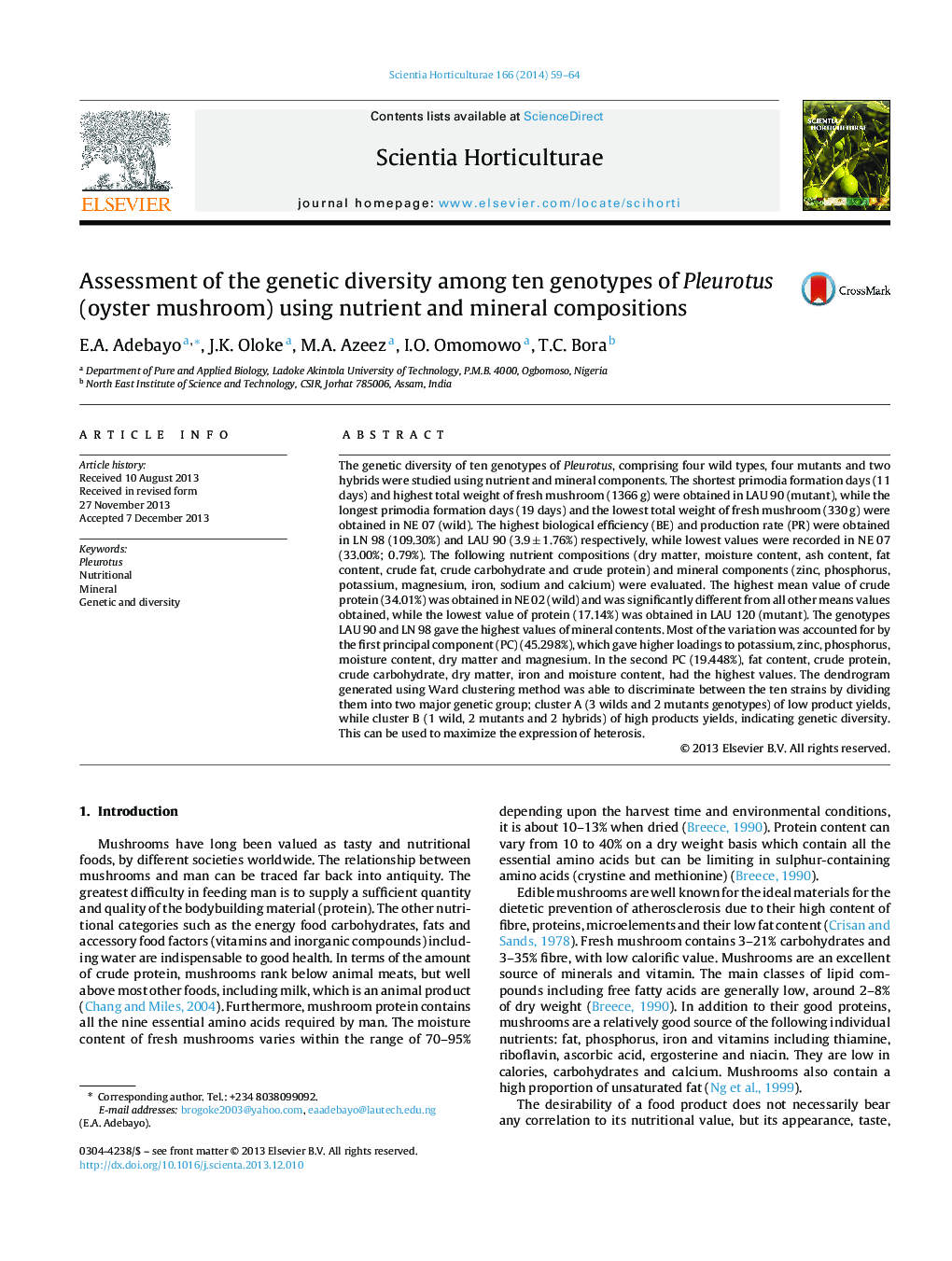| کد مقاله | کد نشریه | سال انتشار | مقاله انگلیسی | نسخه تمام متن |
|---|---|---|---|---|
| 4566932 | 1628832 | 2014 | 6 صفحه PDF | دانلود رایگان |
عنوان انگلیسی مقاله ISI
Assessment of the genetic diversity among ten genotypes of Pleurotus (oyster mushroom) using nutrient and mineral compositions
دانلود مقاله + سفارش ترجمه
دانلود مقاله ISI انگلیسی
رایگان برای ایرانیان
کلمات کلیدی
موضوعات مرتبط
علوم زیستی و بیوفناوری
علوم کشاورزی و بیولوژیک
دانش باغداری
پیش نمایش صفحه اول مقاله

چکیده انگلیسی
The genetic diversity of ten genotypes of Pleurotus, comprising four wild types, four mutants and two hybrids were studied using nutrient and mineral components. The shortest primodia formation days (11 days) and highest total weight of fresh mushroom (1366 g) were obtained in LAU 90 (mutant), while the longest primodia formation days (19 days) and the lowest total weight of fresh mushroom (330 g) were obtained in NE 07 (wild). The highest biological efficiency (BE) and production rate (PR) were obtained in LN 98 (109.30%) and LAU 90 (3.9 ± 1.76%) respectively, while lowest values were recorded in NE 07 (33.00%; 0.79%). The following nutrient compositions (dry matter, moisture content, ash content, fat content, crude fat, crude carbohydrate and crude protein) and mineral components (zinc, phosphorus, potassium, magnesium, iron, sodium and calcium) were evaluated. The highest mean value of crude protein (34.01%) was obtained in NE 02 (wild) and was significantly different from all other means values obtained, while the lowest value of protein (17.14%) was obtained in LAU 120 (mutant). The genotypes LAU 90 and LN 98 gave the highest values of mineral contents. Most of the variation was accounted for by the first principal component (PC) (45.298%), which gave higher loadings to potassium, zinc, phosphorus, moisture content, dry matter and magnesium. In the second PC (19.448%), fat content, crude protein, crude carbohydrate, dry matter, iron and moisture content, had the highest values. The dendrogram generated using Ward clustering method was able to discriminate between the ten strains by dividing them into two major genetic group; cluster A (3 wilds and 2 mutants genotypes) of low product yields, while cluster B (1 wild, 2 mutants and 2 hybrids) of high products yields, indicating genetic diversity. This can be used to maximize the expression of heterosis.
ناشر
Database: Elsevier - ScienceDirect (ساینس دایرکت)
Journal: Scientia Horticulturae - Volume 166, 13 February 2014, Pages 59-64
Journal: Scientia Horticulturae - Volume 166, 13 February 2014, Pages 59-64
نویسندگان
E.A. Adebayo, J.K. Oloke, M.A. Azeez, I.O. Omomowo, T.C. Bora,